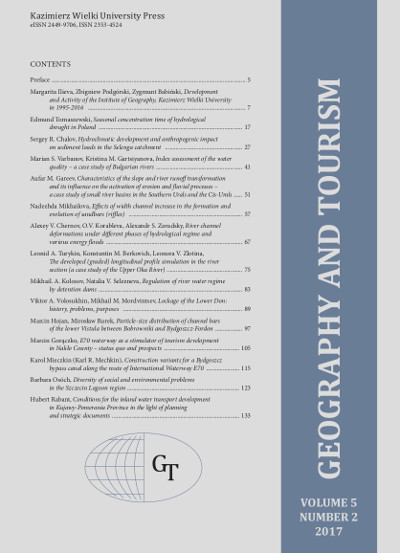Regulation of river water regime by detention dams
Keywords:
rainfall flood, regulation, flood control reservoirs, temporary filled reservoirs, dams, “dry” water reservoir, detention reservoir, flood wave elevation, floodcontrol systemAbstract
The Russian Far East, the North Caucasus and the foothills of the Sayan Mountains are regions of the Russian Federation characterised by a high risk of rainfall floods occurrence. Mountain rivers collect the rainfall runoff on hillsides, which creates a high risk of flooding in urban lands located in floodplain areas. Topographic and hydrological factor analysis and statistical information on the precipitation data enable the identification of the most vulnerable zones where destructive floods are expected. Analysis of the impact of hill slopes on the formation of floods makes it possible to introduce the most effective and environmentally-friendly methods and resources for flood prevention. In order to reduce the negative effects of floods, measures are taken to reduce the flood surge by controlling the inflow to the flood plain. The easiest and most efficient flood run-off control system are self-regulating dams equipped with filters or culverts that allow the creation of temporary detention reservoirs.The use of local materials for the construction of dams (stones, sandbags, brushwood) allows for an efficient and environmentally-friendly system.

